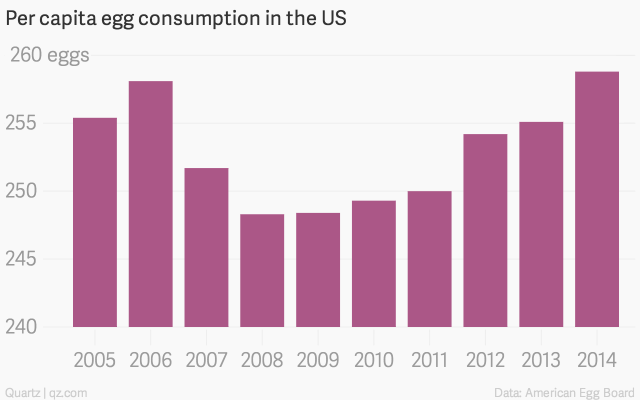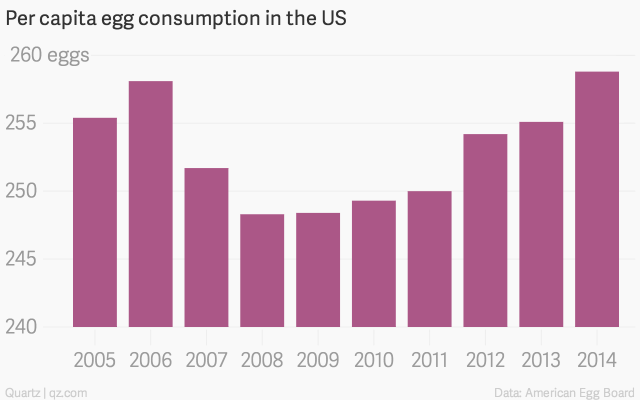Are You Paying More for Eggs? Blame California.

CHAINFOTO24 / Shutterstock.com

Connecting state and local government leaders
The vast majority of U.S. egg producers can't sell in the Golden State.
In 2014, Americans consumed nearly 260 eggs each on average, more than in recent years but fewer than in 1945, when consumption peakedat 402 eggs per person.
The recent uptick in consumption has been attributed to soaring meat prices, which make eggs a comparatively cheaper and more attractive protein source, plus new awareness that eating an egg a day won’t harm your health. A sudden abundance of egg sandwiches and scrambles on fast-food menus has encouraged Americans to eat more eggs at breakfast; and it’s not a stretch to surmise that culinary globalization is introducing Americans to new ways to use eggs in other meals, such as bibimbap. The US loves its eggs once again.

The state that consumes the most of them is California, where new animal-welfare laws concerning egg production kicked in on January 1. From now on, all eggs sold in California must come from hens that live with enough space to stand up, fully extend their limbs, and turn their bodies around. That translates to at least 116 square inches of floor space per chicken, according to NPR.
The vast majority of egg-laying chickens in the US do not live in conditions like that.
Most US chickens are kept in notoriously small “battery cages,” which are illegal in Europe because they’re considered cruel and inhumane.
And now, the vast majority of US egg producers cannot sell eggs in California, which imports about one-third of its eggs each year. As a result, consumers in California will see immediate price increases—from 35% to 70% markups, according to one source quoted by NPR—and prices are expected to rise in the rest of the country, too, as farmers will either be spending on replacing their battery cages with alternative structures or reducing the sizes of their flocks (or both) to comply with the new standards.
The wholesale price of a dozen eggs fluctuated between $1 and $1.77 across the US in 2014, according to government statistics. Egg prices swing up and down regularly, The Wall Street Journal noted in 2013, but before 2005 the average wholesale price of a dozen was always less than one dollar.

If it gets close to $2 per dozen, perhaps consumption will turn down again. In any case, given the impact of California’s new laws on egg farming across the country—not to mention the rise of California-based food company Hampton Creek, which aims to eventually get consumers to entirely replace farmed eggs with its plant-based substitutes—it seems that 2015 is the year the US egg industry gets scrambled.




